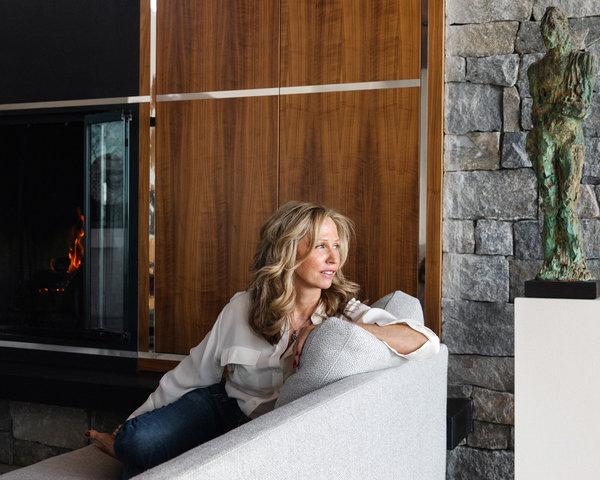When Robin Brown bought an oceanfront property in Prides Crossing, a neighborhood in Beverly, Mass., in 2011, her life was in transition.
She had been living in Manhattan for more than two decades, during which time she had founded and sold Clay, a boutique gym and spa near Union Square. She had also married and divorced, and raised a daughter who would soon be leaving home.
With so many changes, “I just needed a place to go and figure out what my next move was — and who I was without the relationship, parenting every day and my business,” said Ms. Brown, 58, a health coach.

Robin Brown previously lived in Manhattan, where she founded Clay, a boutique gym and spa near Union Square.CreditCody O’Loughlin for The New York Times
Smitten with the beauty of the rocky coastline northeast of Boston, where industrialists like Henry Clay Frick had built lavish summer estates more than a century earlier, she knew exactly where she wanted to put down new roots. But browsing listings for houses in the area revealed a common problem: “They were just so, so big,” she said.
When she finally heard about a smaller house for sale on a lot of less than two acres that had been part of a larger estate, with terraced gardens descending to the ocean, she didn’t hesitate. “I raced up here and bought it as soon as I could,” she said, paying $3.3 million, although the house itself wasn’t much.
“They advertised that it was in the Walter Gropius style, midcentury modern,” Ms. Brown said. “But it was really just a not-very-well-built home.”
For a few years, she used it as a second home, knowing she would eventually replace it. Then she asked Chris Kofitsas, an architect and the president of New World Design Builders, to knock it down to make way for a new house that would become her primary residence.
Ms. Brown had met Mr. Kofitsas a decade earlier when she was contemplating building additional Clay spas. Those projects didn’t pan out, but the two had become fast friends and shared similar ideas about design.
At Clay, she said, “The architecture, to me, was as crucial to the concept as the weights, the cafe and the spa, because I am a firm believer that what you surround yourself with, and visually look at each day, has a huge impact on how you feel. That translated into the spot we created here.”
She also liked that Mr. Kofitsas was a one-stop shop, providing design services, construction, millwork and custom furniture out of his workshop in Clifton, N.J.
“Having done many, many renovations in my time, I was very impressed with the way he operated,” she said, noting that it resulted in fewer changes and surprise expenses than she had in previous experiences, when the design and building responsibilities were split between an architect and a contractor.
For the new house, Mr. Kofitsas envisioned a place that blended modern, minimalist architecture with layers of warm, inviting finishes, while maintaining the footprint of the original house so the foundation could be reused. “One of the most expensive things in construction is the foundation, and the foundation of this house was perfectly fine,” he said. “The floor plan is completely different than what it was, but the footprint is the same.”
The only exceptions were two additions: an attached garage and extra space for the master suite.
The resulting 4,000-square-foot, three-bedroom house uses a steel structure, locally quarried stone and plenty of glass to dissolve the barrier between interior and exterior, including a 40-foot wall of sliding glass doors. During warmer months, when the doors are open, the living room and terrace connect to become “one massive living area that’s both inside and outside,” Mr. Kofitsas said.
Some interior walls were designed to hold specific pieces from Ms. Brown’s art collection, including works by Vik Muniz, Carlos Alfonzo and Julie Blackmon. For furniture, Mr. Kofitsas designed and built a floor-to-ceiling media unit with bookshelves, a credenza with leather-wrapped doors for the dining area, a canopy bed for the master bedroom and a Murphy bed for another bedroom.
After about a year of construction, at a cost of roughly $2 million, Ms. Brown moved into her new home in November 2017, before the outdoor spaces were completed the following spring.
“In the summer, when the glass doors are opened up, it’s a pretty special place to be,” she said. “Modern architecture can be so cold, lifeless and sterile. But there’s nothing sterile about this place.”
Her friends seem to agree. Ms. Brown has had so many visitors that she asked Mr. Kofitsas to convert a detached two-car garage on the property into a guesthouse.
“I have nonstop company in the summer,” she said. “It’s like I run an Airbnb.”
For weekly email updates on residential real estate news, sign up here. Follow us on Twitter: @nytrealestate.







